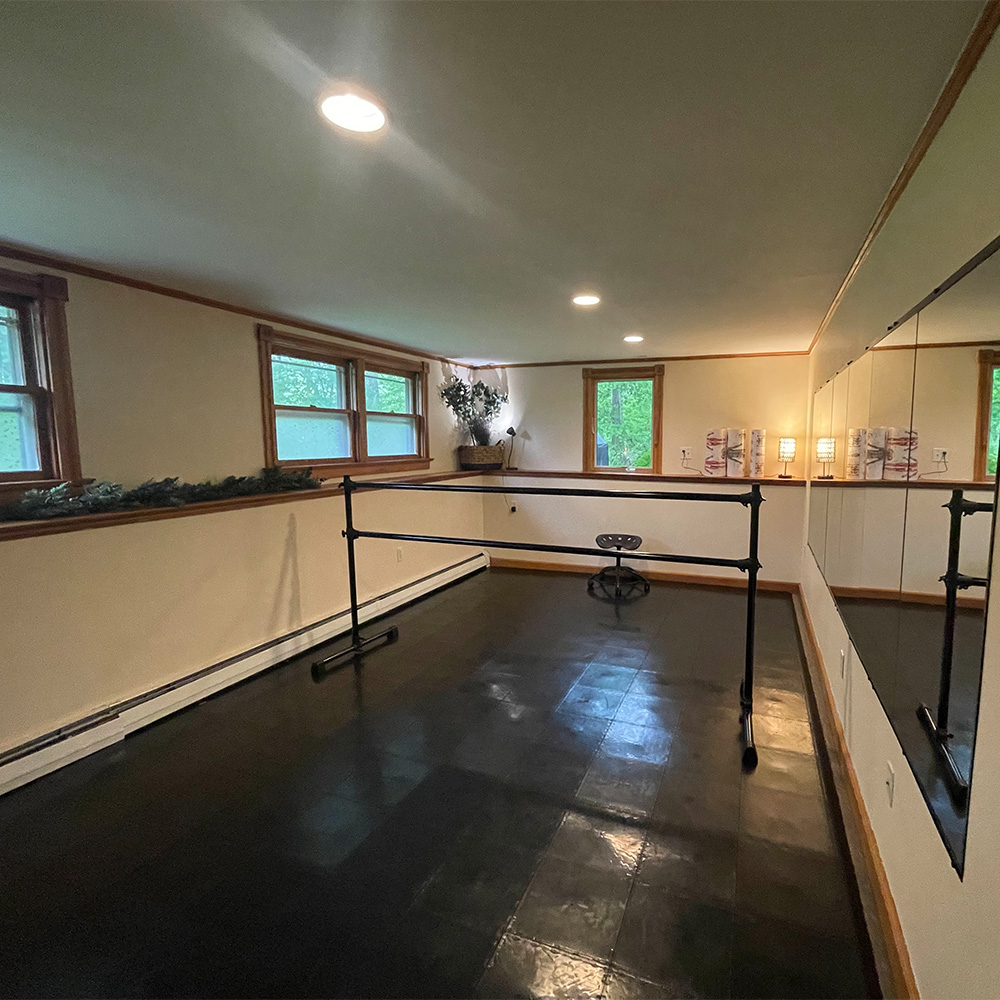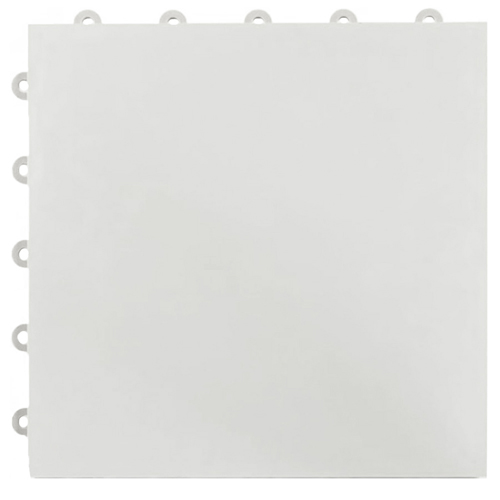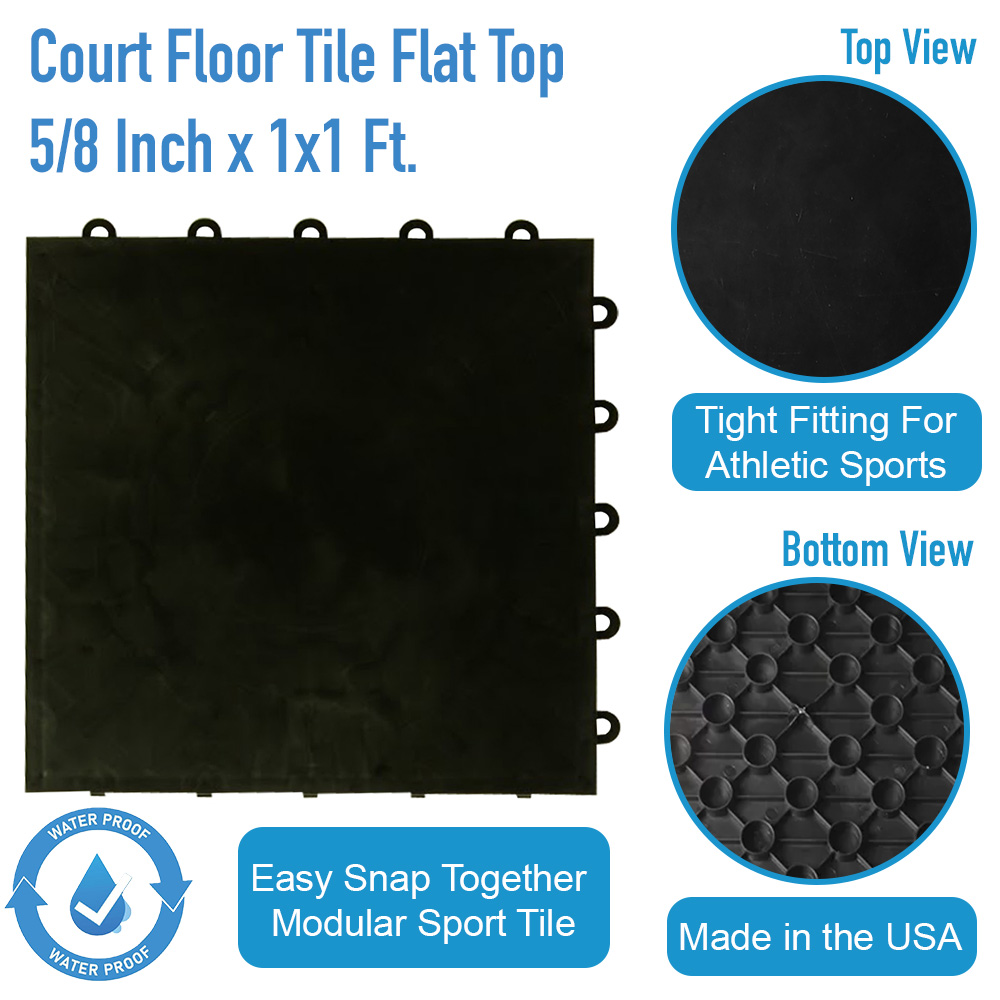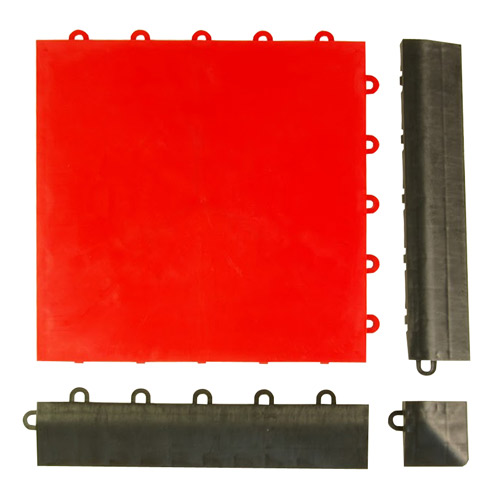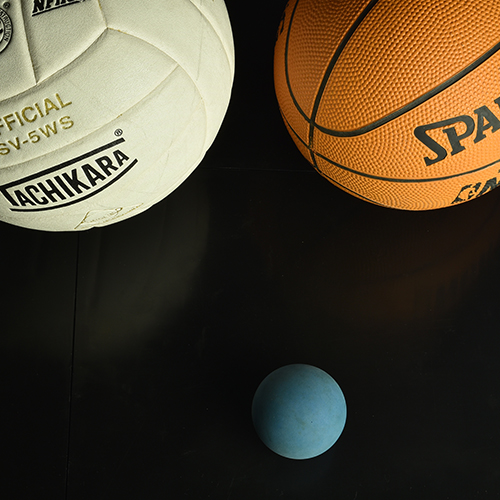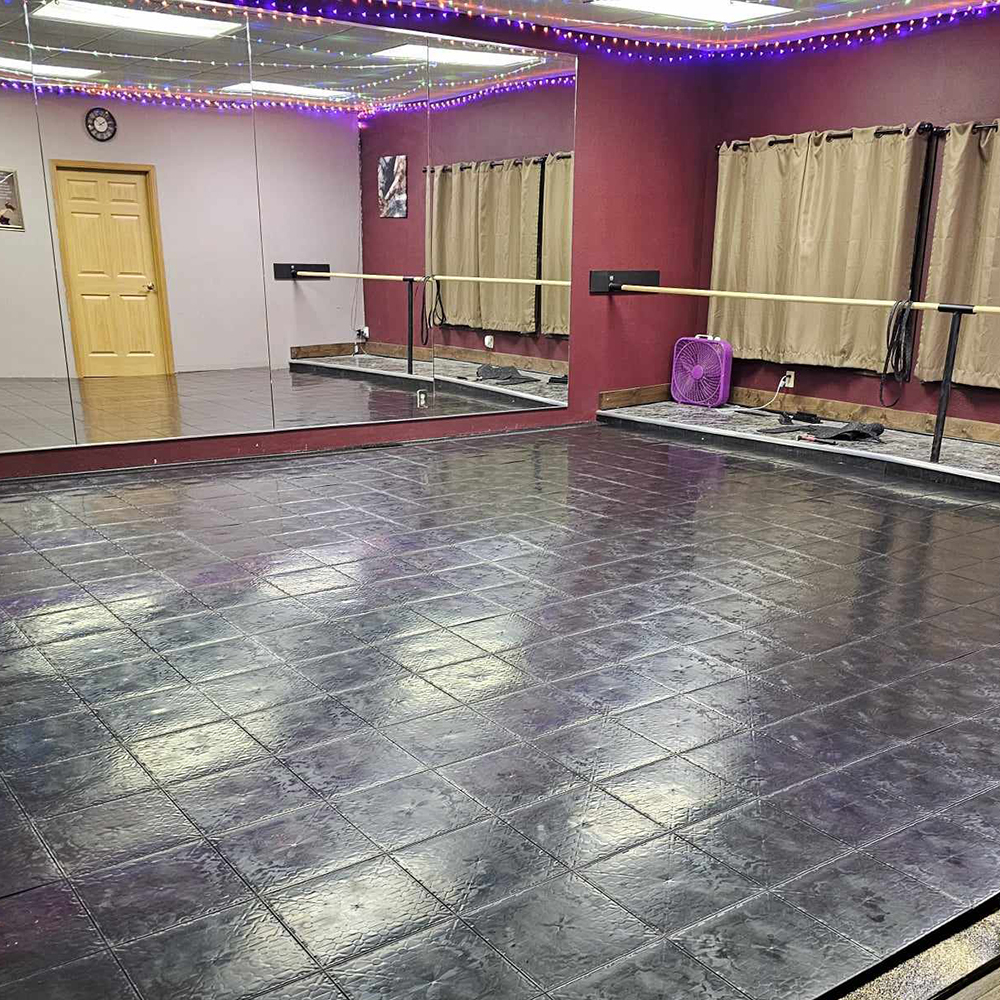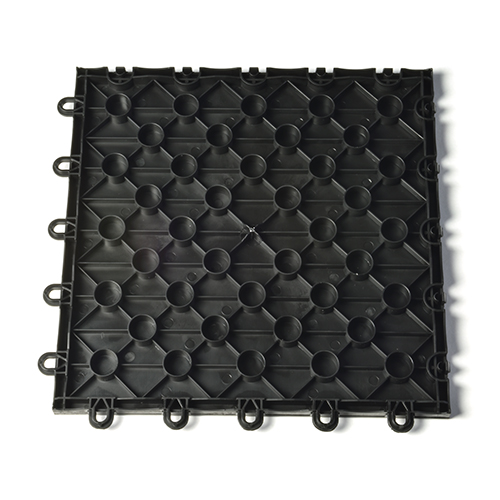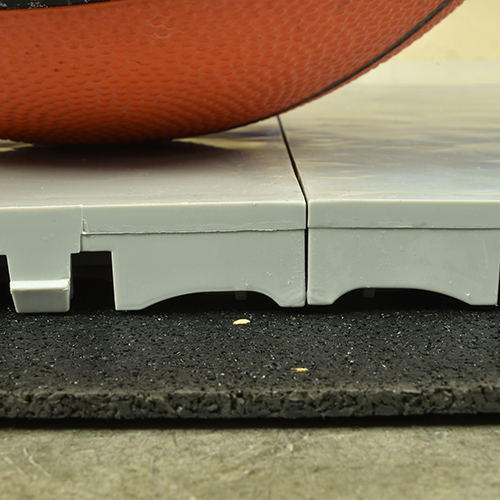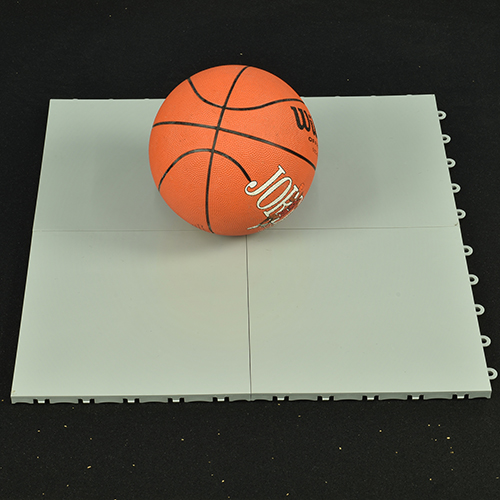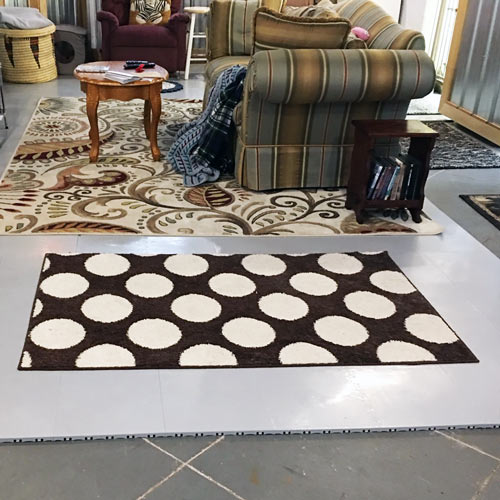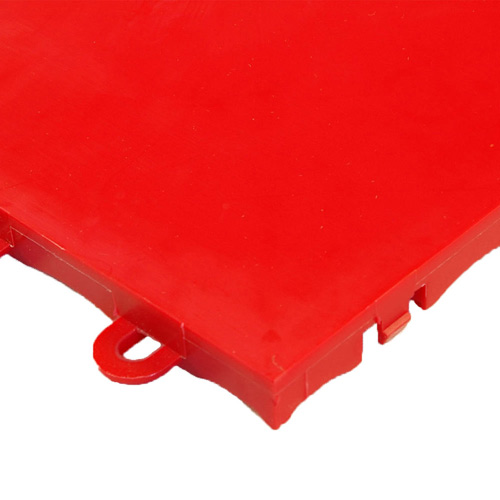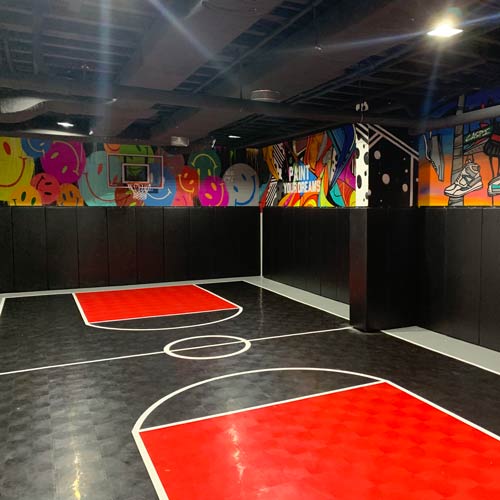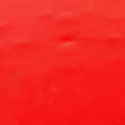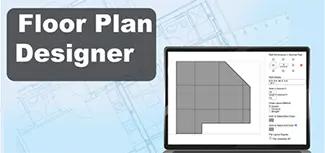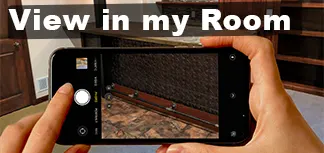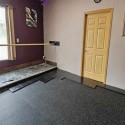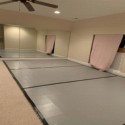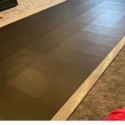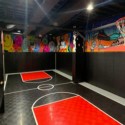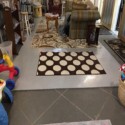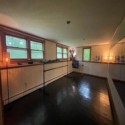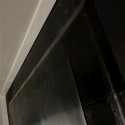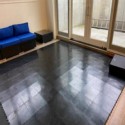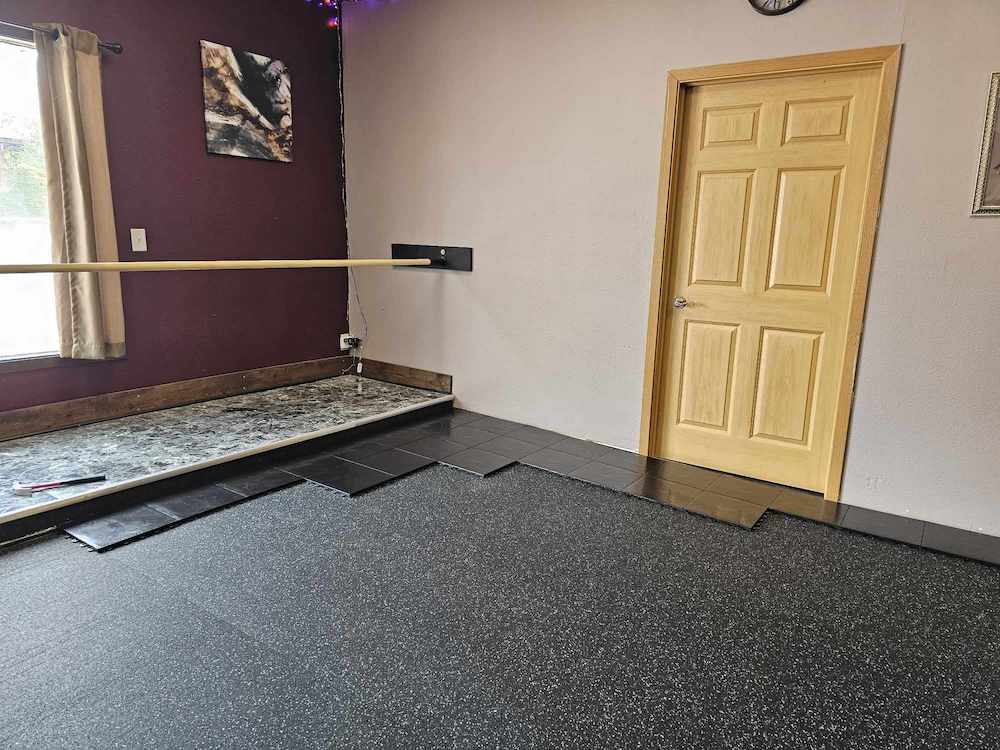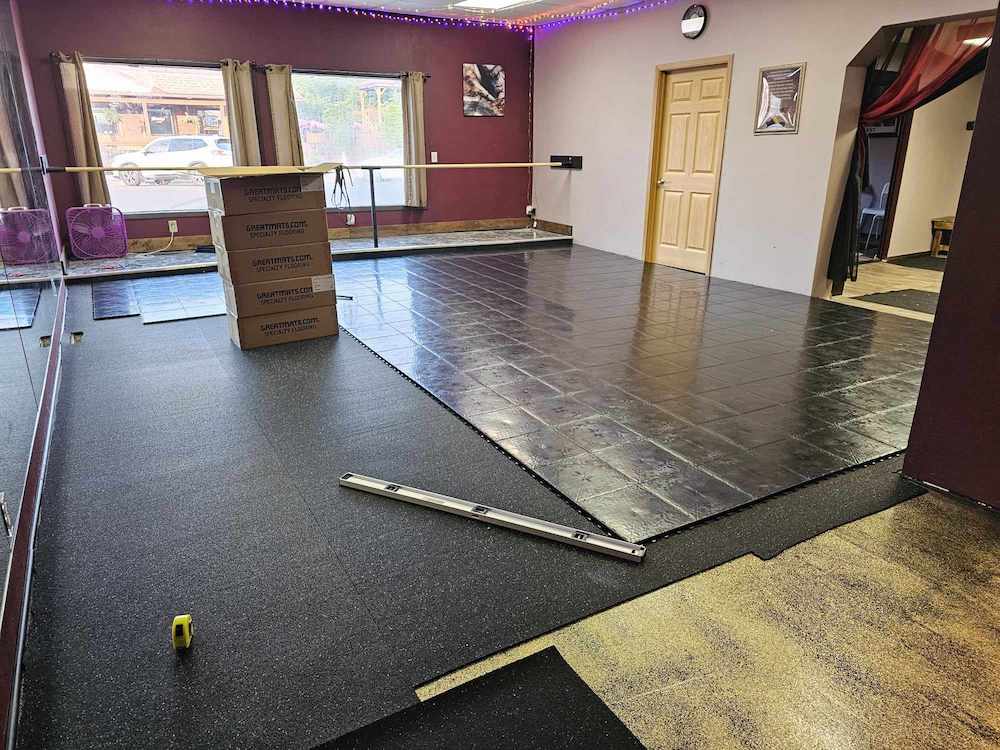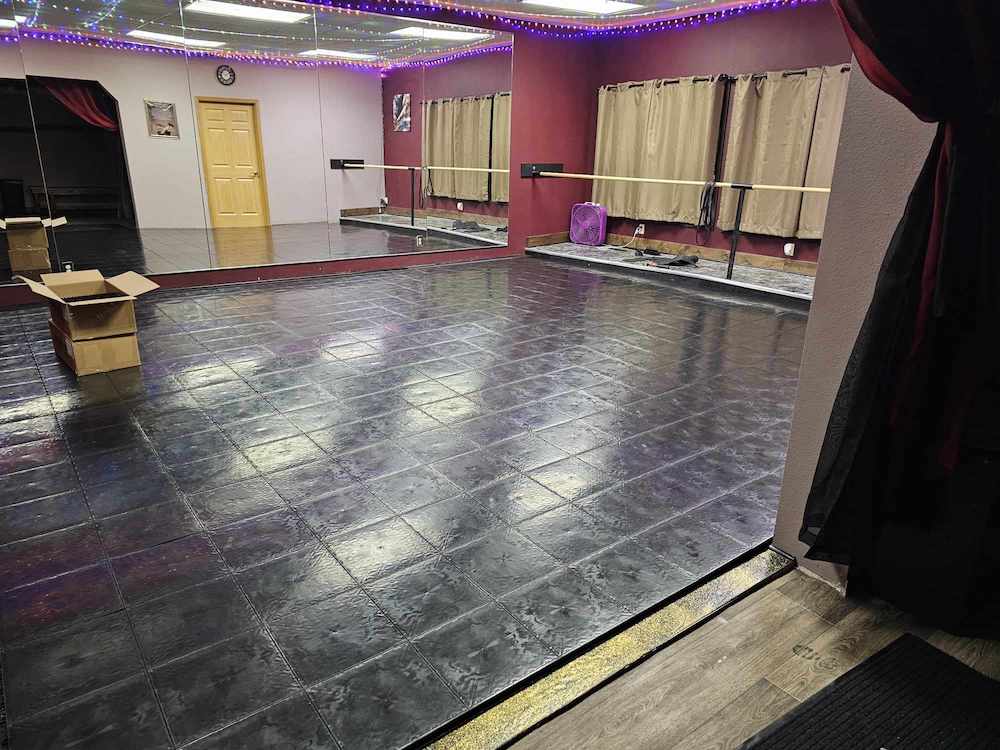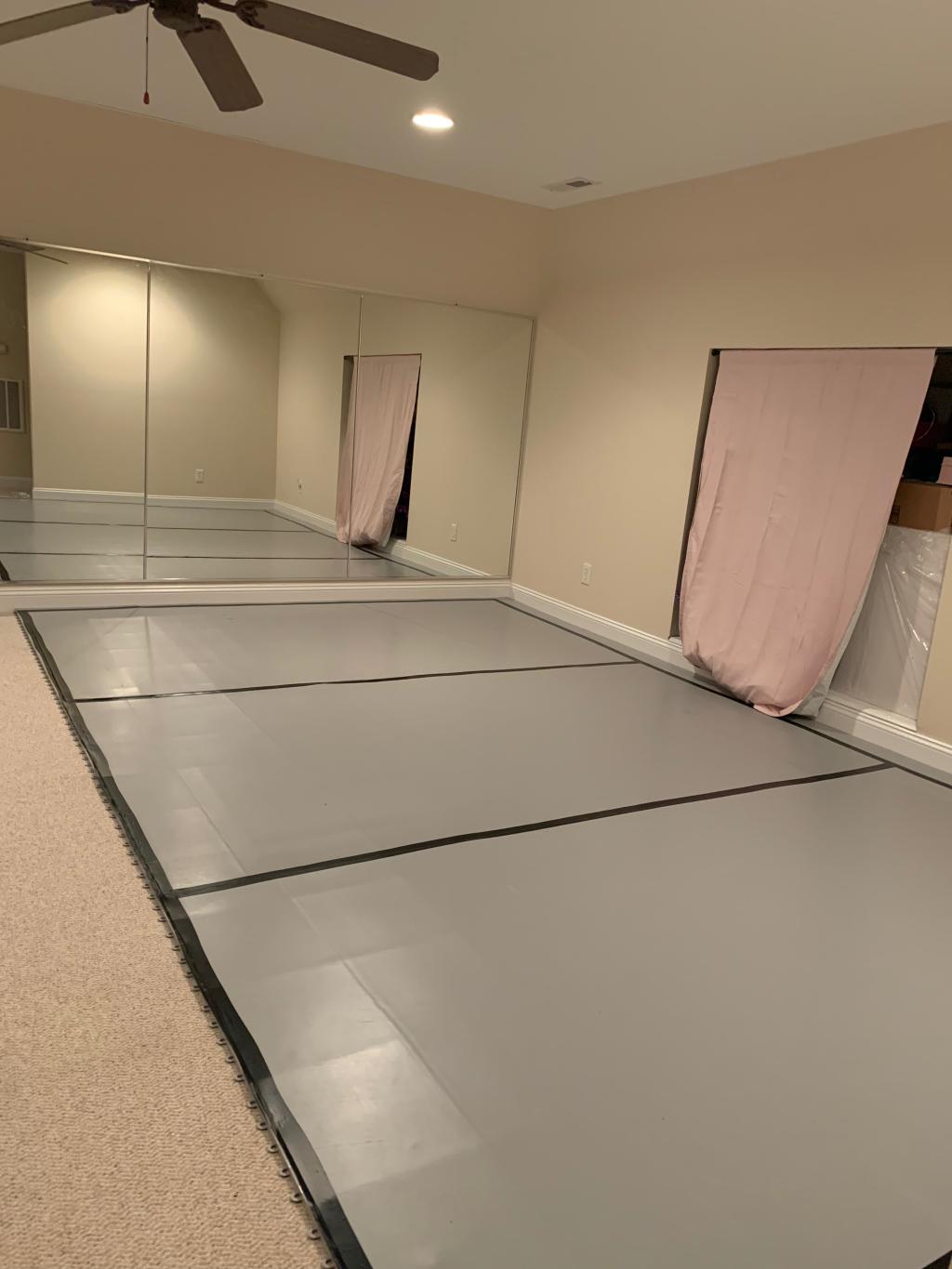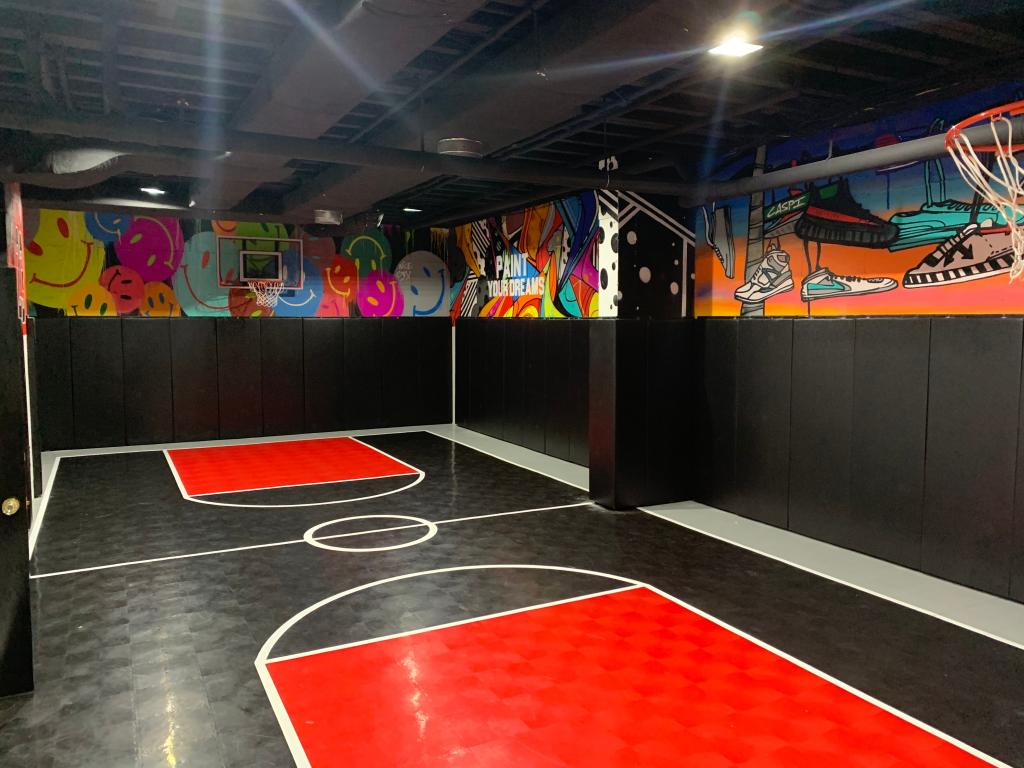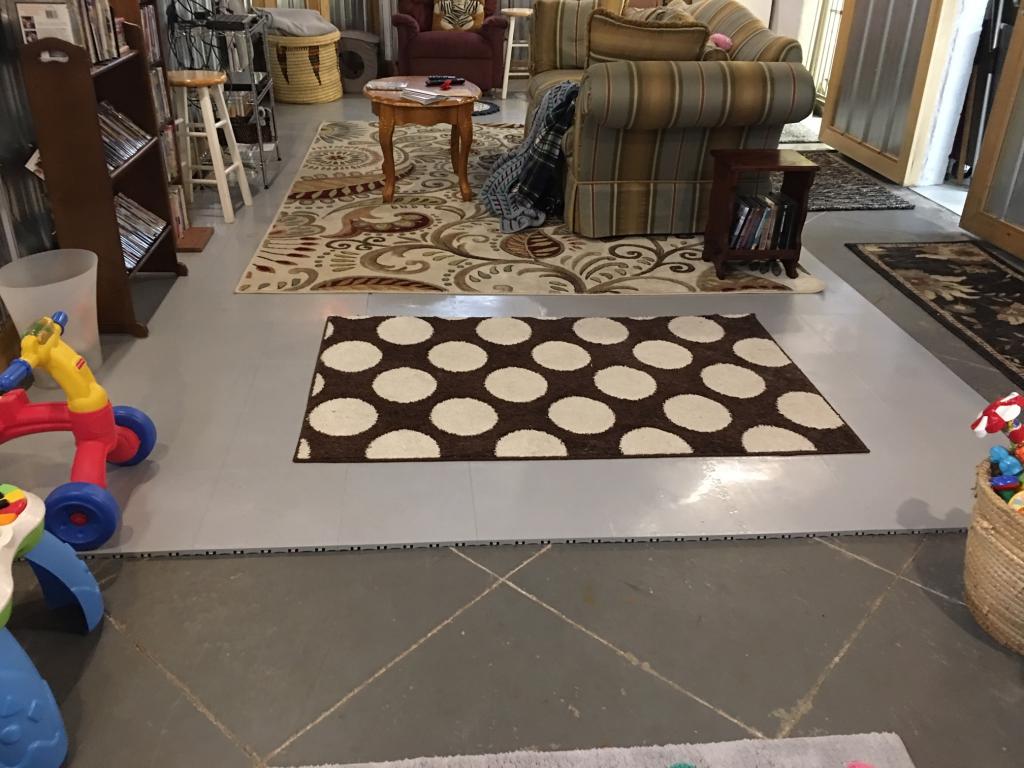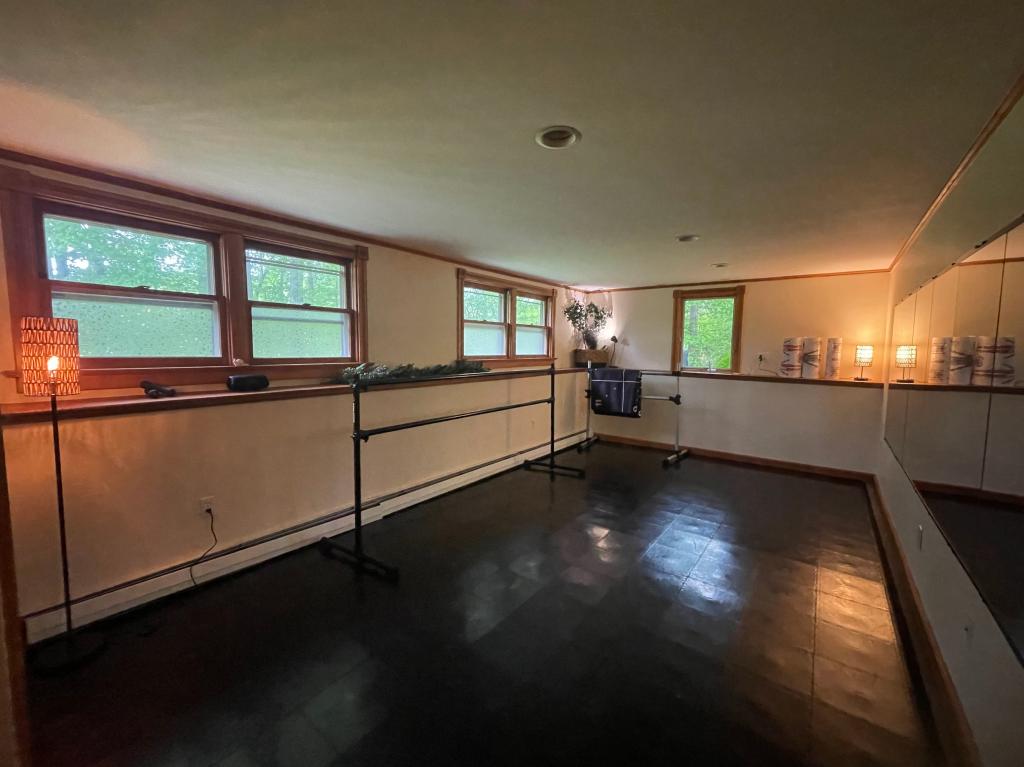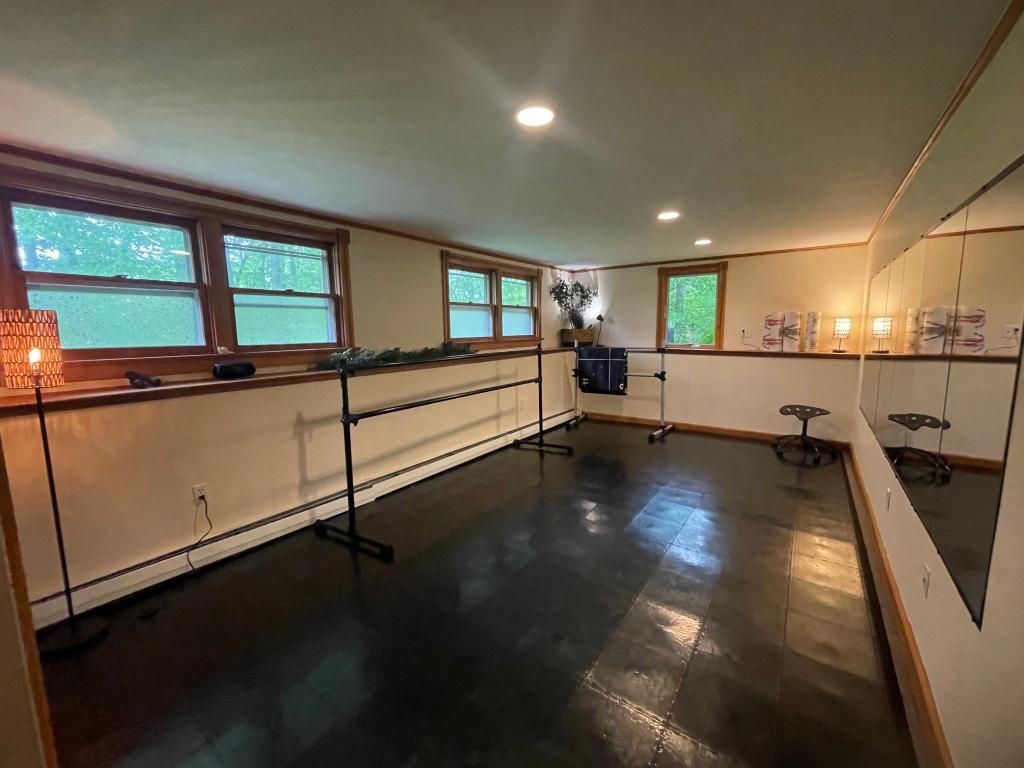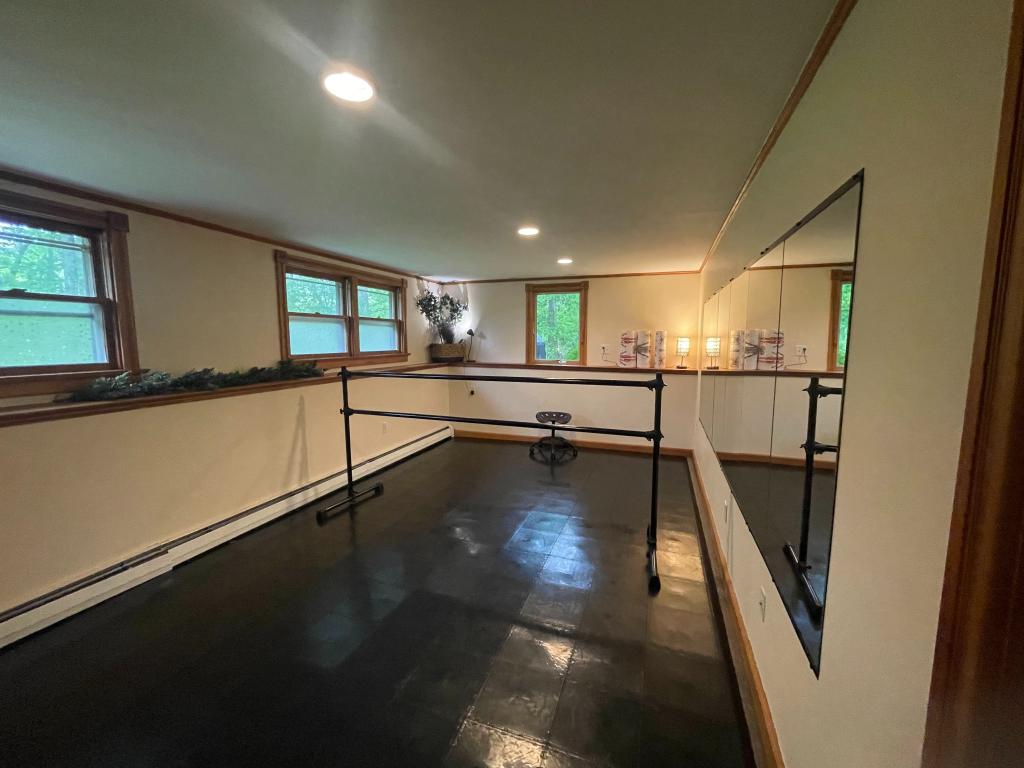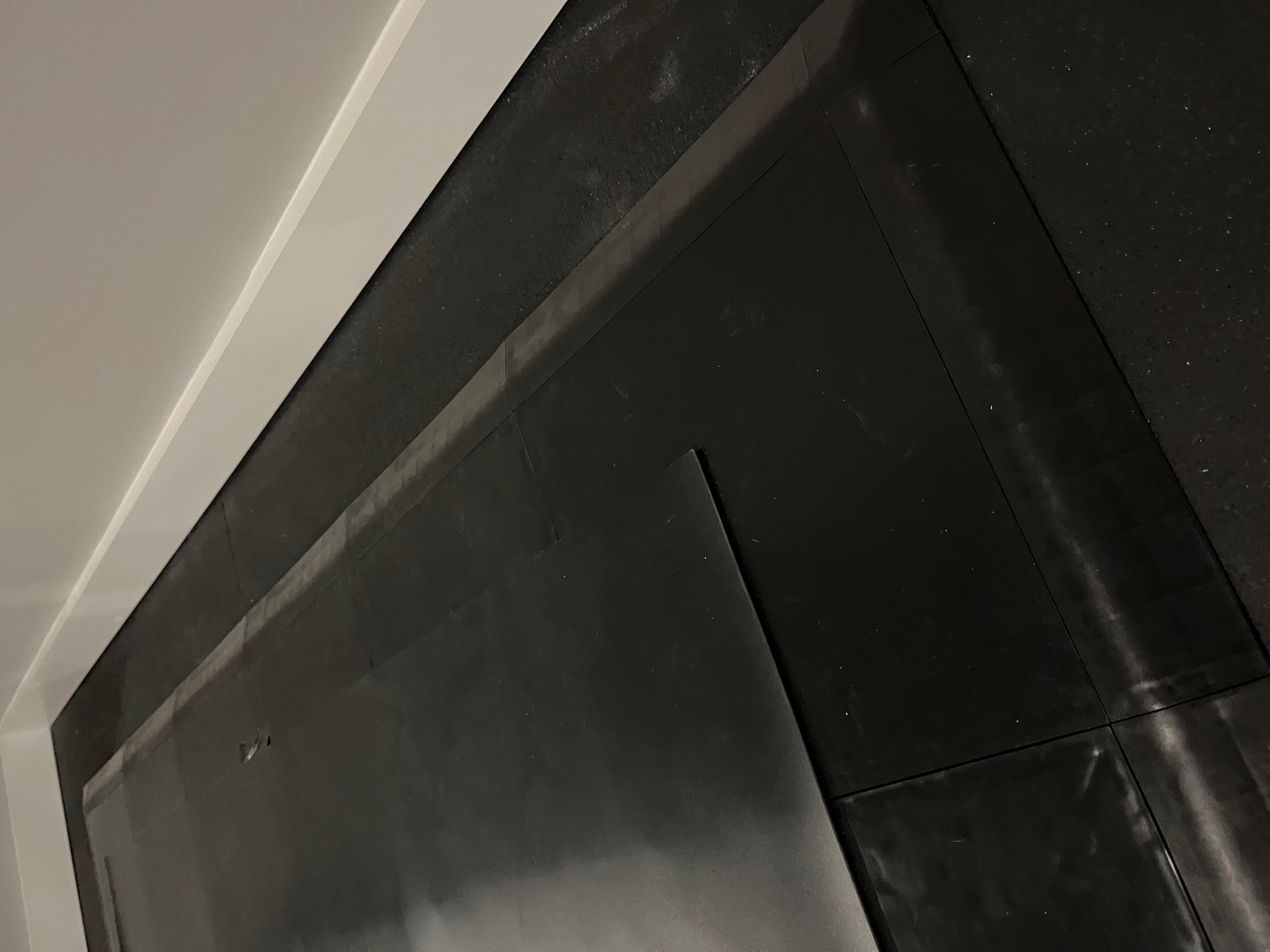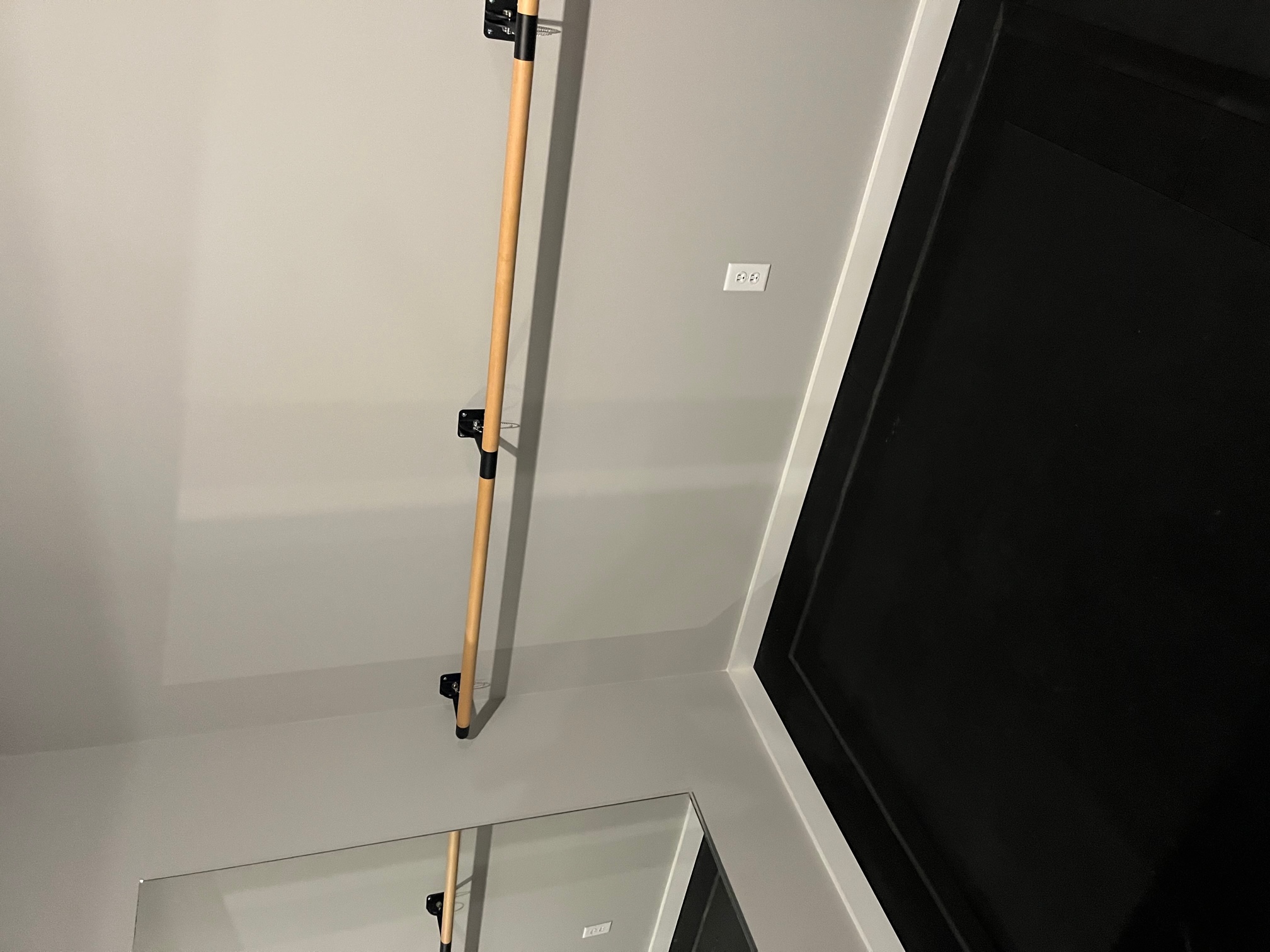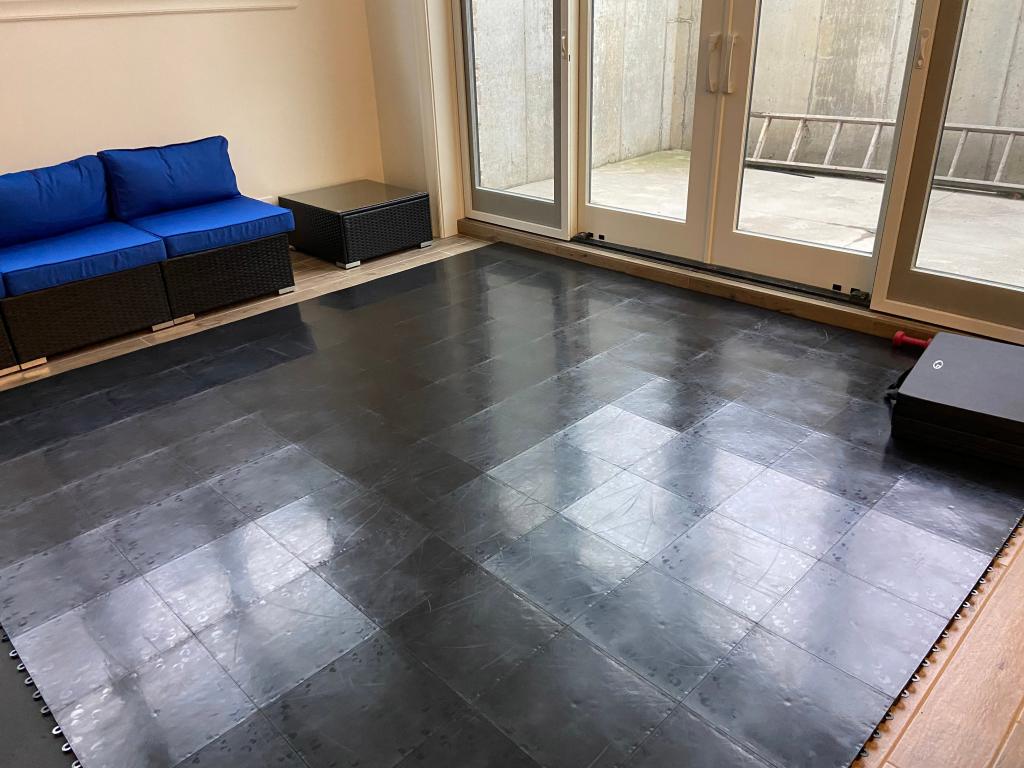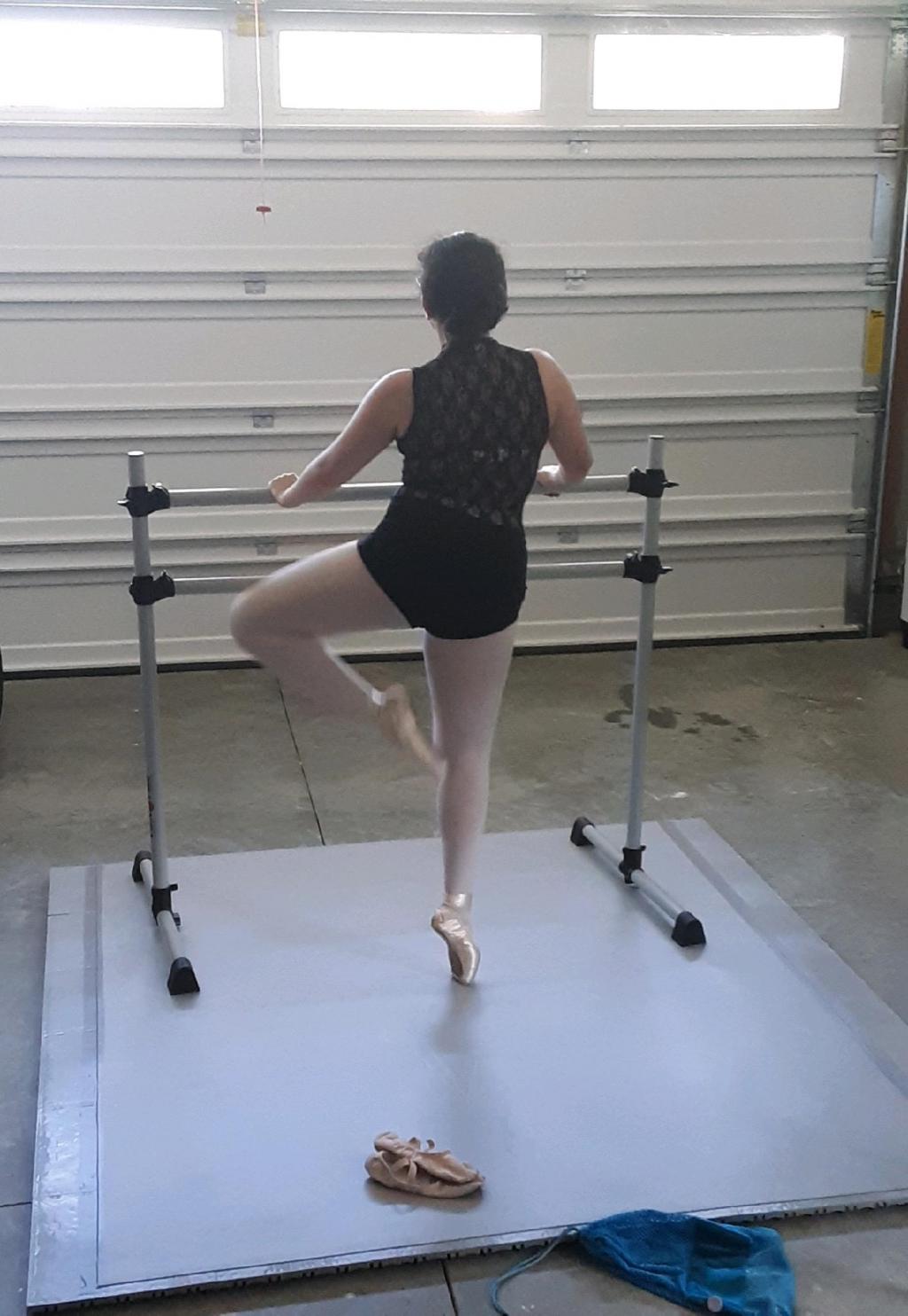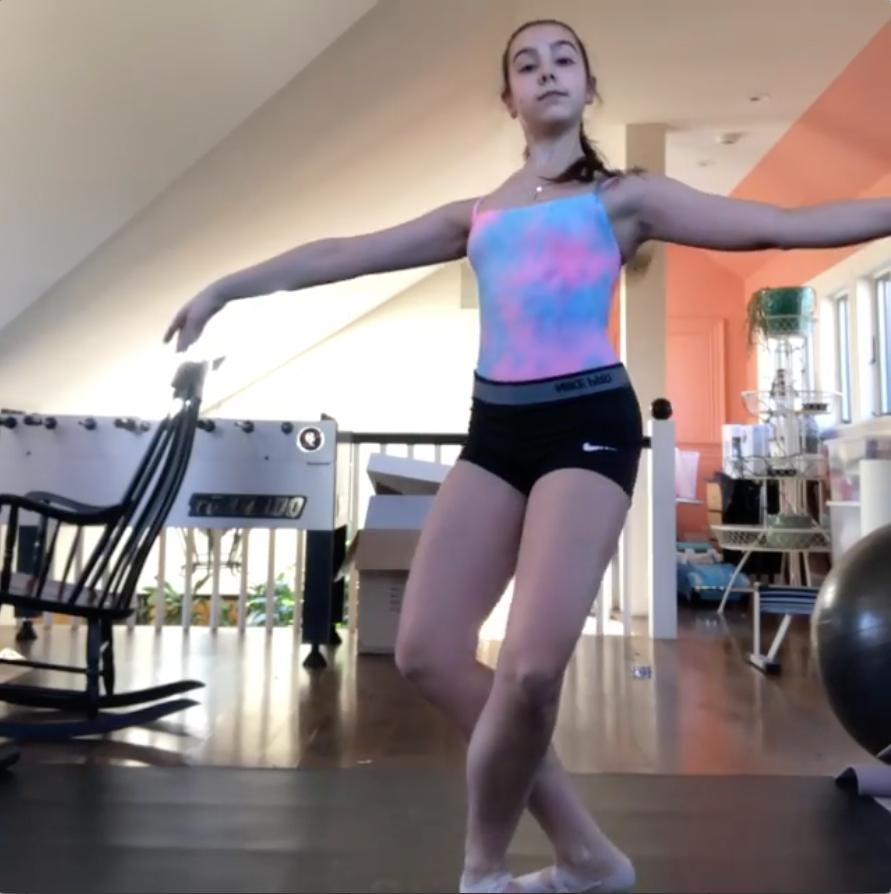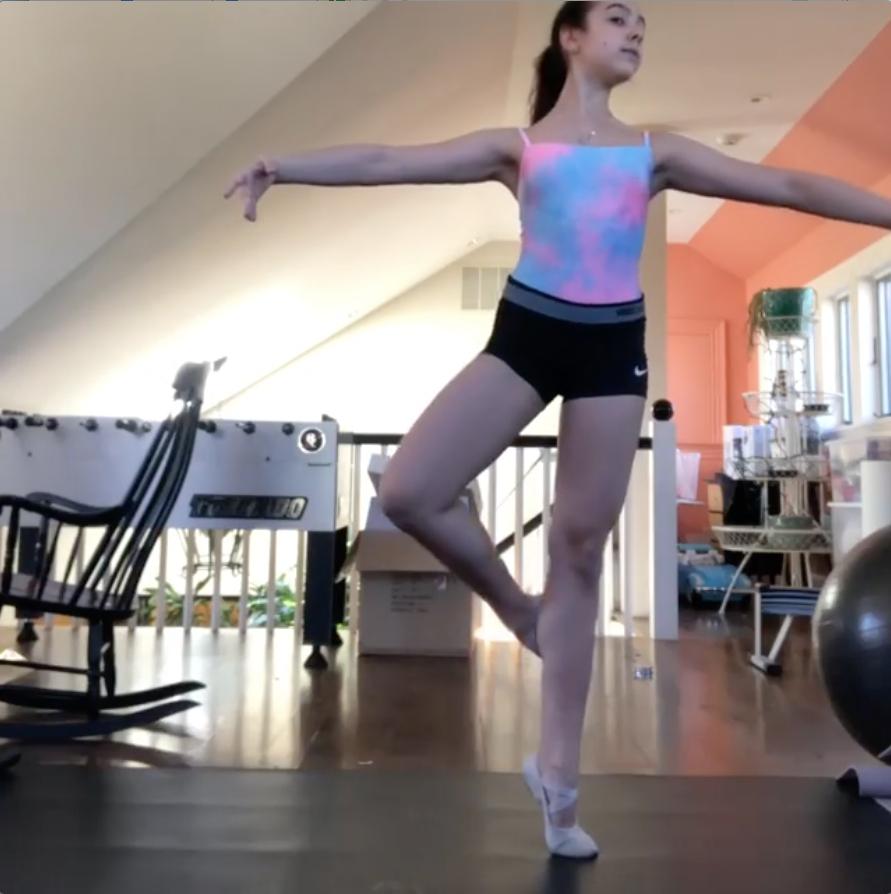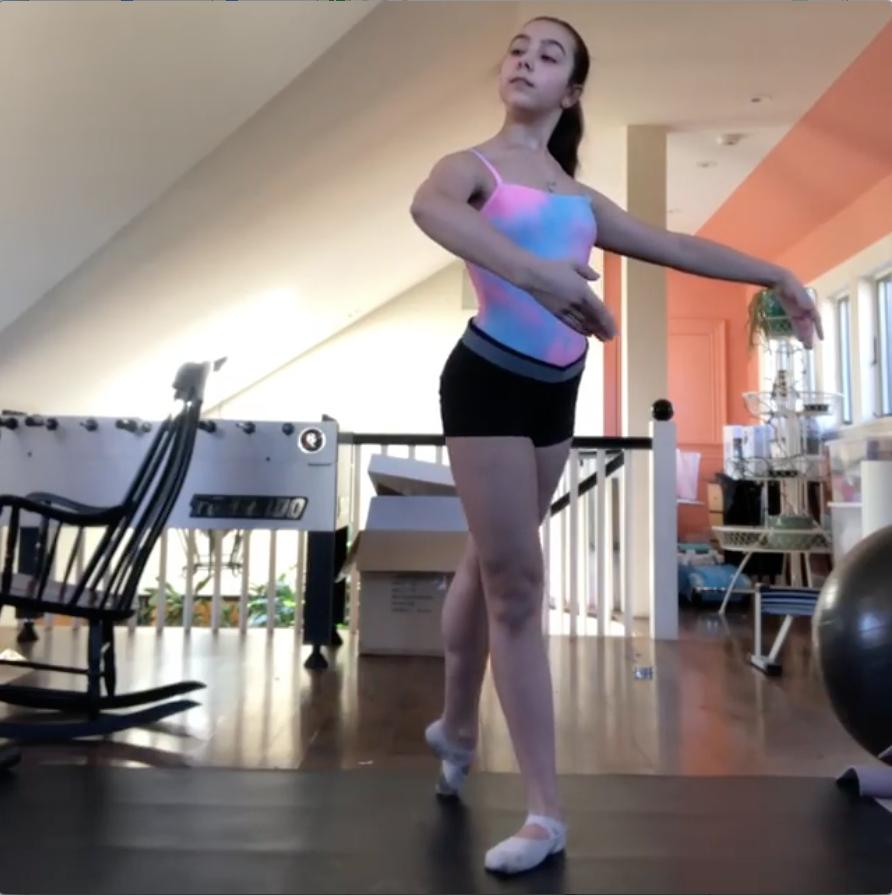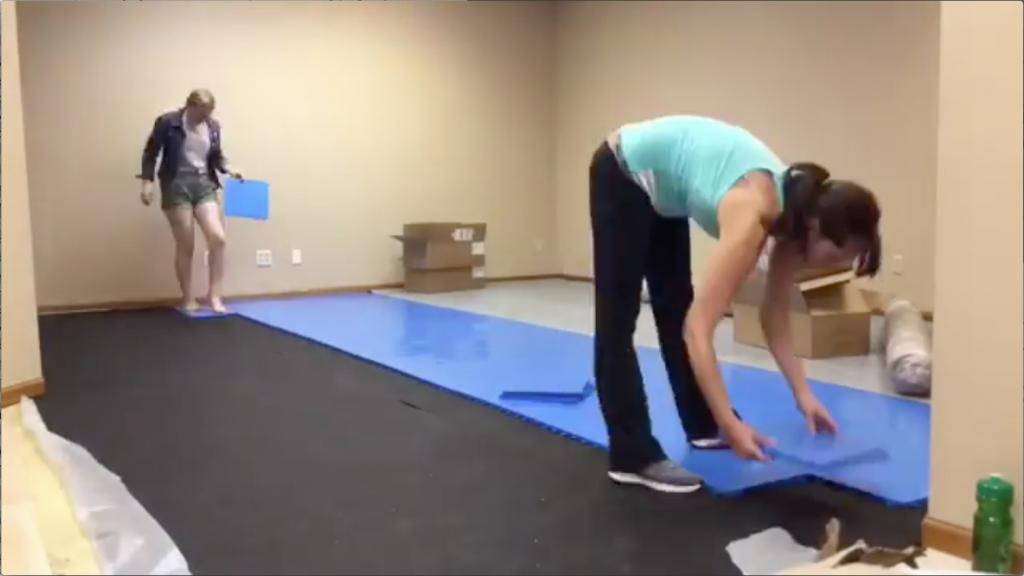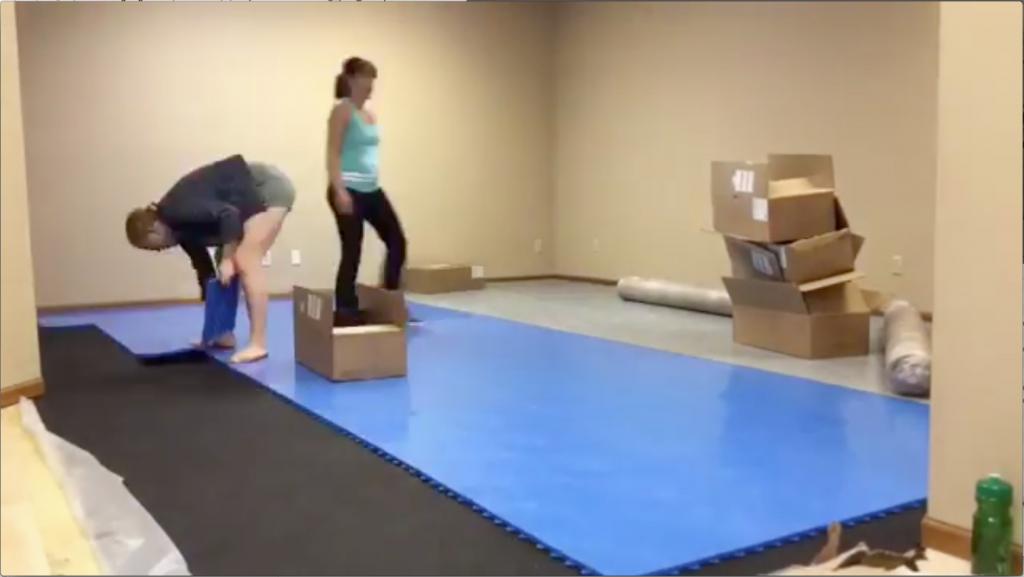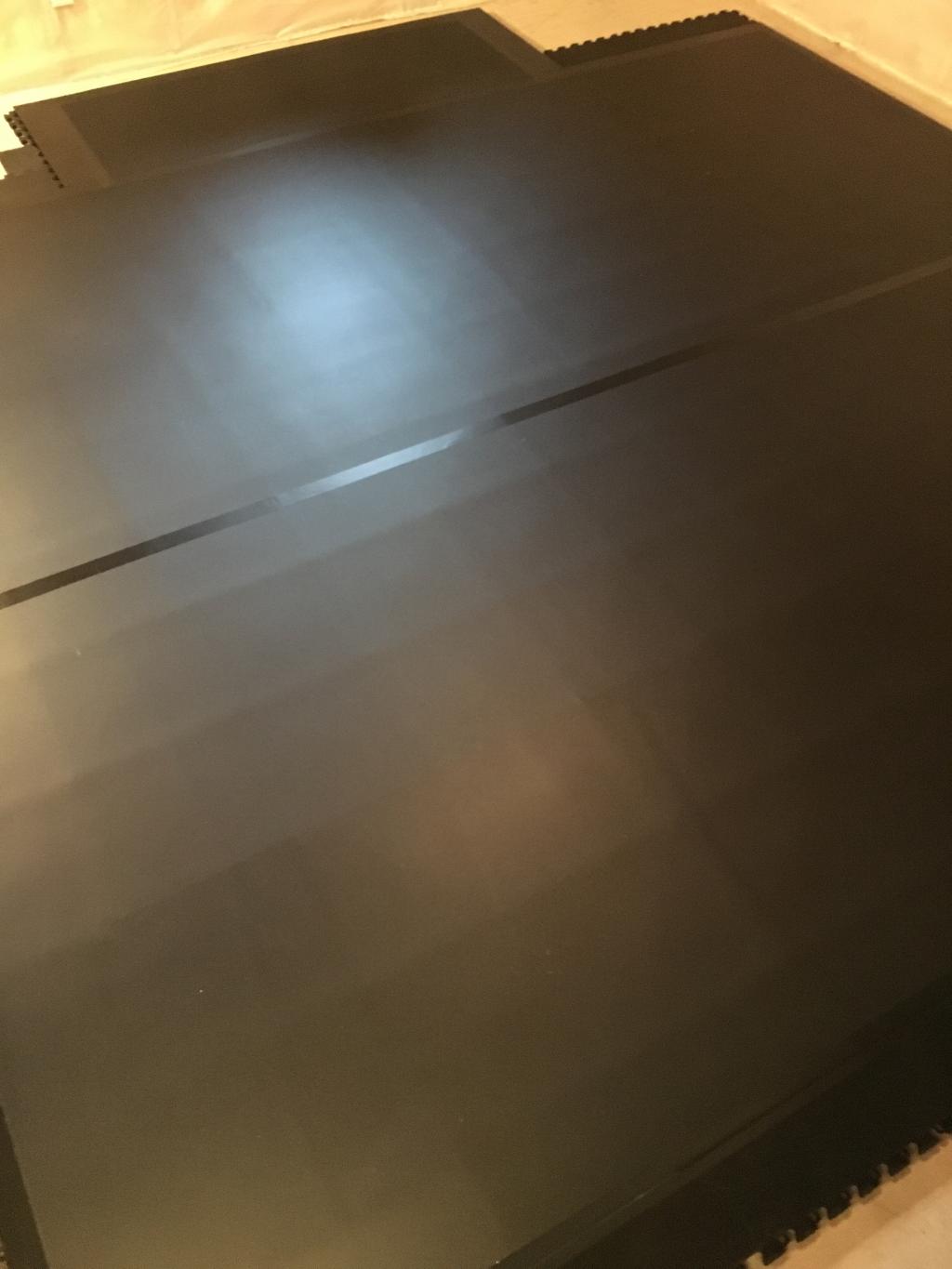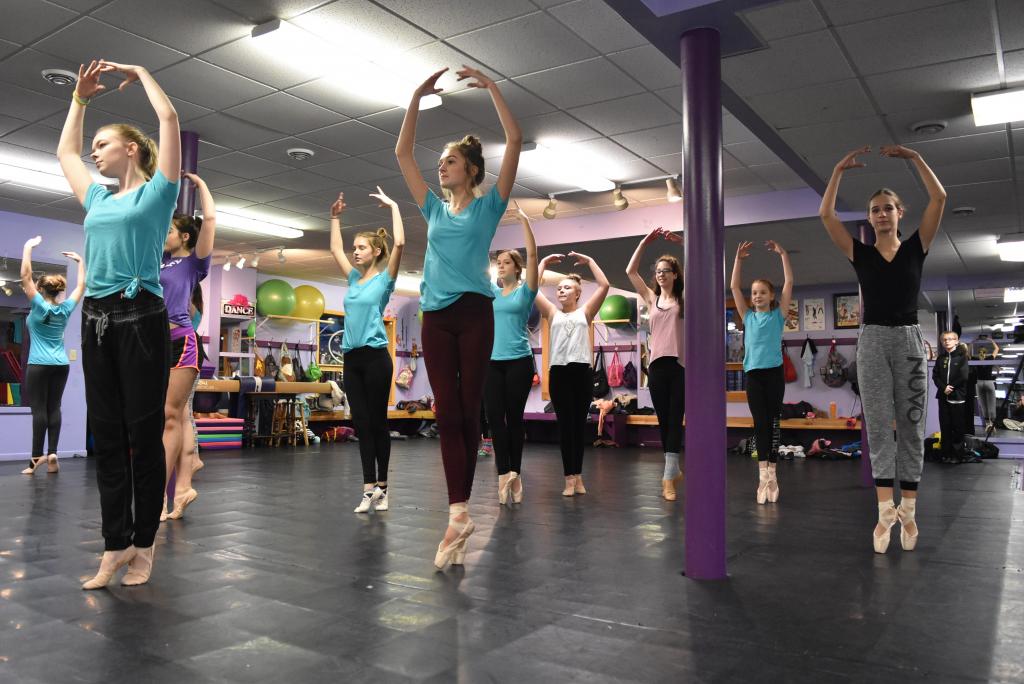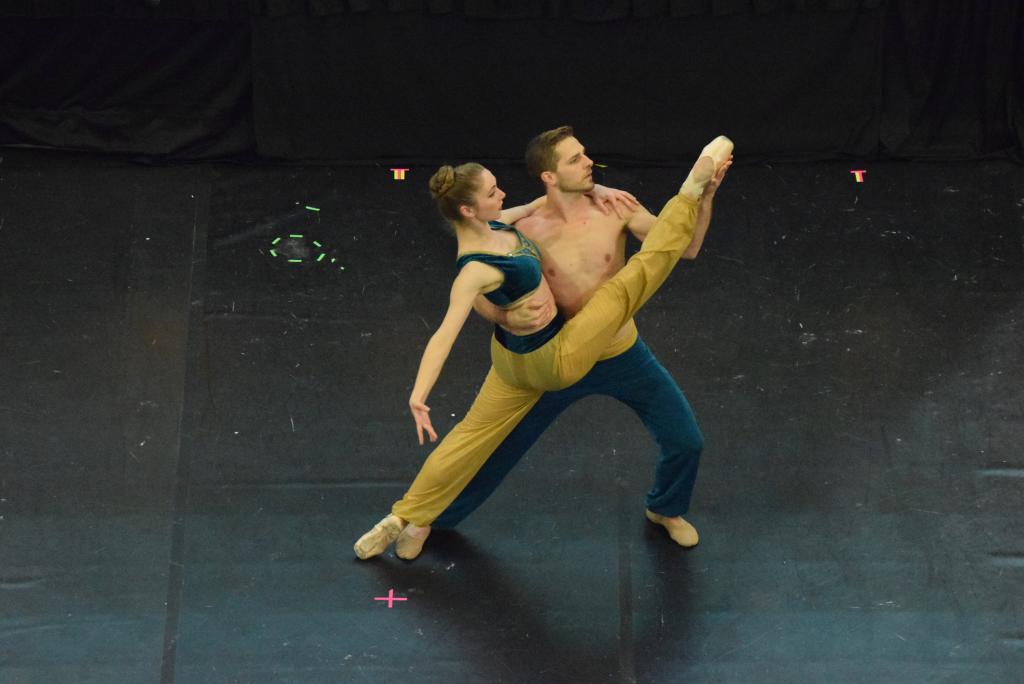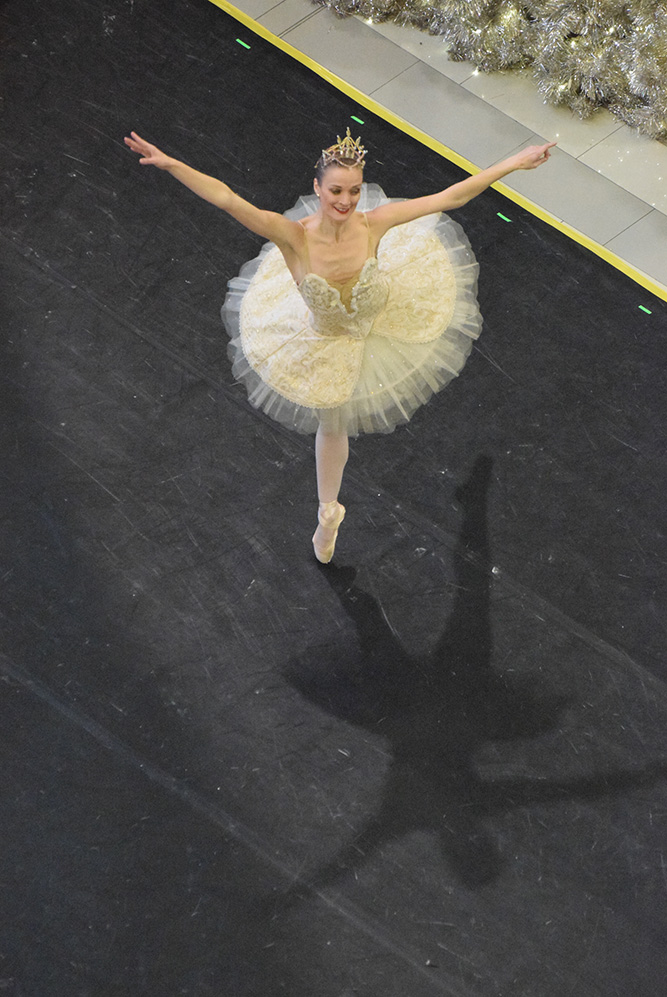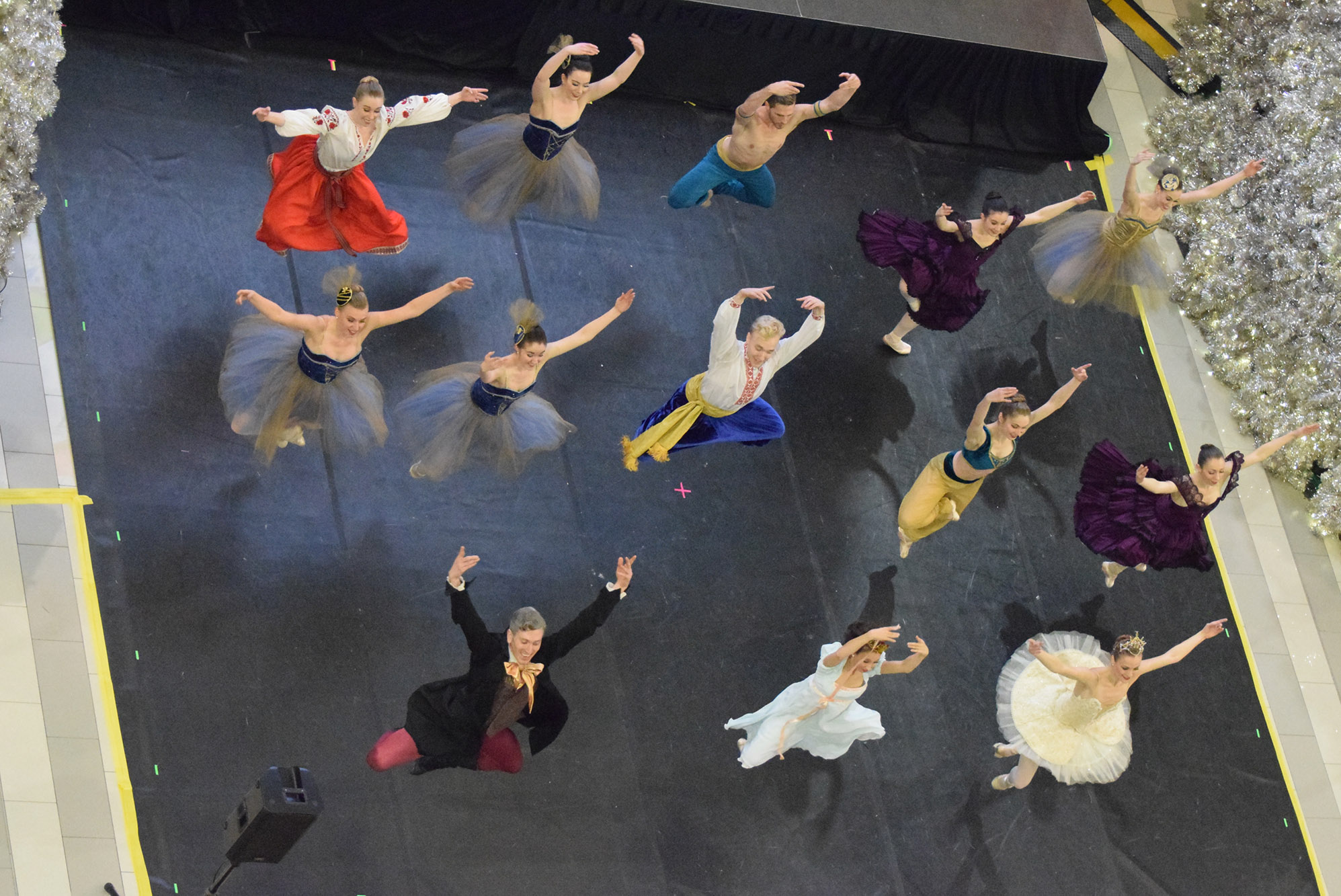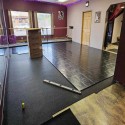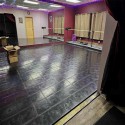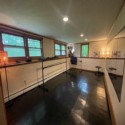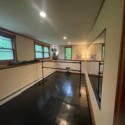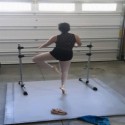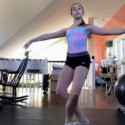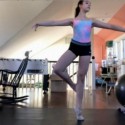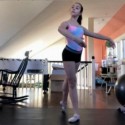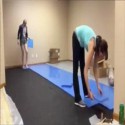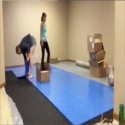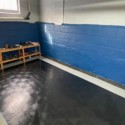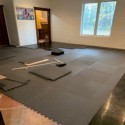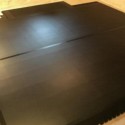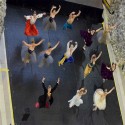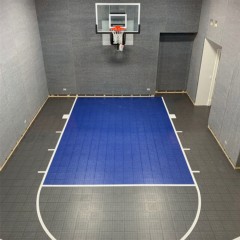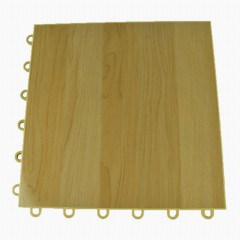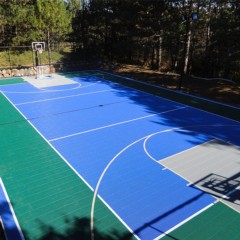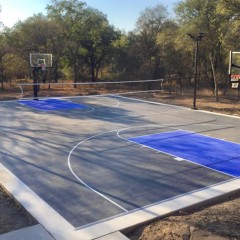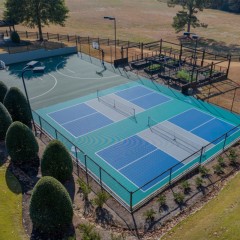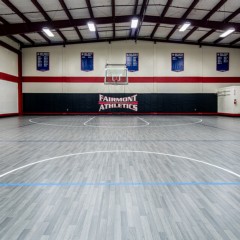Court Floor Tile Flat Top 5/8 Inch x 1x1 Ft.
- DIY installation job with a tight interlock system
- Secure snap together system doesn’t need glue
- Made to allow repeated assembly and disassembly
- See More Details
- DIY installation job with a tight interlock system
- Secure snap together system doesn’t need glue
- Made to allow repeated assembly and disassembly
- Ideal for damp area environments with a raised base
- Multiple tile colors that allow painting of lines
- Static load tested for 10,000 pounds per sq ft
- Durable tiles with a 5-year warranty
- Works as dance subfloor over low-pile carpet* or concrete
Sports flooring, Basketball court flooring, Volleyball court flooring, Basement flooring, Dance subfloor
Instant Indoor Basketball Court Tiles
Create a high-quality basketball or volleyball floor with our court tiles. They have tabs and loops on all four sides that connect together quickly, making installation a breeze.
This is a perfectly flat surface that you can create as a DIY installation job without needing to use glue or adhesive. The tiles interlock together tightly.
Homeowners can use these basketball or volleyball court tiles to create an indoor DIY court in a basement, shed, garage, or barn at home, creating the perfect place to practice.
Dance Subfloor Over Carpet
When you want a firm surface over which you can place a roll of marley dance floor, these tiles provide the smooth base layer you want. This is recommended for use over low-pile or non-padded carpet. It may not work over plush or padded carpet. Results may vary depending on the carpet. Please get in touch with customer service if you have any questions.
We recommend a base of foam tiles for home use over hard flooring or plyometric rubber for commercial use over concrete.
Portable Basketball and Volleyball Court Tile Flooring
This works as one of the best portable basketball or volleyball court flooring options that we offer, as the tabs and loops are made so you can assemble and disassemble the court tiles quickly and repeatedly.
You can set up the basketball and volleyball floor tiles for practice and then disassemble them and return them to the subfloor for other activities.
Use this basketball court and indoor volleyball court flooring over hard concrete to make the court surface more forgiving for players who must jump and run for basketball and volleyball.
Quickly Create a DIY Indoor Basketball or Volleyball Court Floor
We offer our court tiles in three different colors, so you can match the basketball or volleyball gym floor court layout with the desired color.
- Red
- Black
- Light gray
The polypropylene plastic material allows you to paint lines on the surface, meaning you can create the most realistic tile volleyball court or basketball court.
Paint a 3-point line for basketball and a serving line for volleyball to give players the best environment for practices. Your DIY court doesn’t have to have a generic look when you can paint on the plastic.
Other Usage Options
Beyond use for a basketball court or a volleyball court, you can use these tiles for several other reasons.
- Over carpet: Although we don’t recommend placing these tiles over carpet when planning a basketball or volleyball practice, they can go over carpet for other use cases such as a home dance subfloor.
- Wet basement: If the concrete in the basement is damp, our tiles have a raised base that allows air to flow underneath, evaporating any moisture.
Disclaimer
When using this as a dance subfloor over carpet, results may vary depending on the thickness of the carpet and padding. It works best with low-pile carpet. Not recommended for basketball flooring over carpet, as the ball may not bounce properly.
Maintenance
Clean with a damp mop, hot water, and common household floor cleaner.
Shipping
Ships in cartons via ground service to your door; for larger orders, product may ship via freight delivery.
Please review our shipping disclaimer.
| SKU# | CSTFT |
| In Stock | Yes |
| Product Type | Tile |
| Material Type | Polypropylene Plastic |
| Product Edging | Interlocking |
| Thickness | 5/8 inch |
| Width | 1.01 feet |
| Length | 1.01 feet |
| SF per Item | 1.02 |
| Weight | 0.93 lbs |
| Packaging | Cartons |
| Non Absorbent | Yes |
| Special Adhesives | No |
| Universal Interlock | No |
| Interlock Loss | 0.00 feet |
| Material Hardness | Shore A 100 |
| Interlocking Connections | Yes |
| Made In | USA |
| Surface Finish | Flat Smooth |
| Surface Design | Solid Color |
| Installation Method | Snap Together, Dry Lay |
| UV Treated | No |
| Reversible | No |
| Border Strips Included | No |
| Manufacturer Warranty | 5 year limited |
Product Questions:
Q: Does this flooring have a lot of traction? I want flooring to make a small volleyball court because I currently have a concrete one, which makes it very hard to dive and get the ball unless you want to be bruised and scrape up your knees.
Q: Can I use this in a wet basement?
Q: I was wondering if I could use this product in my backyard. It's a dirt backyard, and I was wondering how it would compare to a concrete backyard. I would like to play basketball with it and was wondering how it would hold up.
Q: We have a concrete floor. Will we need padding under this when we install it, or can it go straight on the concrete?
Q: Is it suitable for Pickleball? Will it support cars? I want to put a pickleball court in my garage.
Q: Could it be laid over a wood basketball court without hurting it? Or would it need an underlayer?
Q: I want to set up my floor for advanced ballet practice (Pointe, jump, and turn). Can I put this on top of a hard floor or carpet with a Marley mat on top? What kind of Marley mat would you suggest? Rosco Adagio? Is the reversible one also ok?
Q: Can it be used for outdoor figure skating? What recommendations would you give me for installing it on a cement floor?
Q: Is this more or less slippery than the Rosco Adagio dance floor?
Q: I want to put this down at a dog boarding facility. Does it have traction to prevent people from slipping if it gets a little wet?
Q: Can I use these outdoors?
Q: If I lay these over vinyl or laminate flooring, will the tiles scratch the flooring? Or should I lay down a protective covering before laying down the plastic tiles?
Q: Would this provide a good surface for basketball dribbling drills if placed over a medium-pile carpet?
Q: I have a flat area in my backyard that currently has artificial turf. Could this be laid on top of the turf if we want a harder surface for playing basketball? Bounce doesn’t need to be perfect; just better than bouncing on turf.
Customer Rating:
07/13/2023
We had an all around fantastic experience with Great Mats. We were looking for a versatile dance floor for all styles and they delivered! Staff was super helpful and very responsive. The subfloor was super easy to install and feels great to dance on! Can't recommend this company enough!
Annaleise
Grantsburg, WI
Customer Rating:
01/20/2022
We love our flooring
Perfect for my daughter to dance
Easy install
Dana
LANCASTER, SC
Customer Rating:
05/20/2020
We recently ordered 120 court top floor tiles to use as a subfloor for under our new Adagio dance flooring. The pieces were easy to snap together and work well to support the dance floor which was installed over our basement carpeting. Great customer service and fast shipping!
Jennifer
Duncansville, PA
Customer Rating:
11/11/2019
Your flooring and wall mats in my home - Take a look ! The left side is still not done but you get the idea. It’s great.
Joshua
GREENWICH, NY
Customer Rating:
01/04/2019
The installation was easy. Still waiting for next spring to determine how well water passes underneath the flooring on its way to the drain in the laundry room. From the photo, water enters on the left and should pass underneath and exit on the right to the laundry room. The floor is close to level and I never see more than ¼” of standing water in the middle of the floor. The tiles sit on the concrete and “walking” noise is modest.
Next spring, the water should flow under the flooring and exit to the drain. Our dehumidifier should dry out the rest that remains. Hopefully the furniture you see will stay dry.
Laird
ROCKFORD, IL
